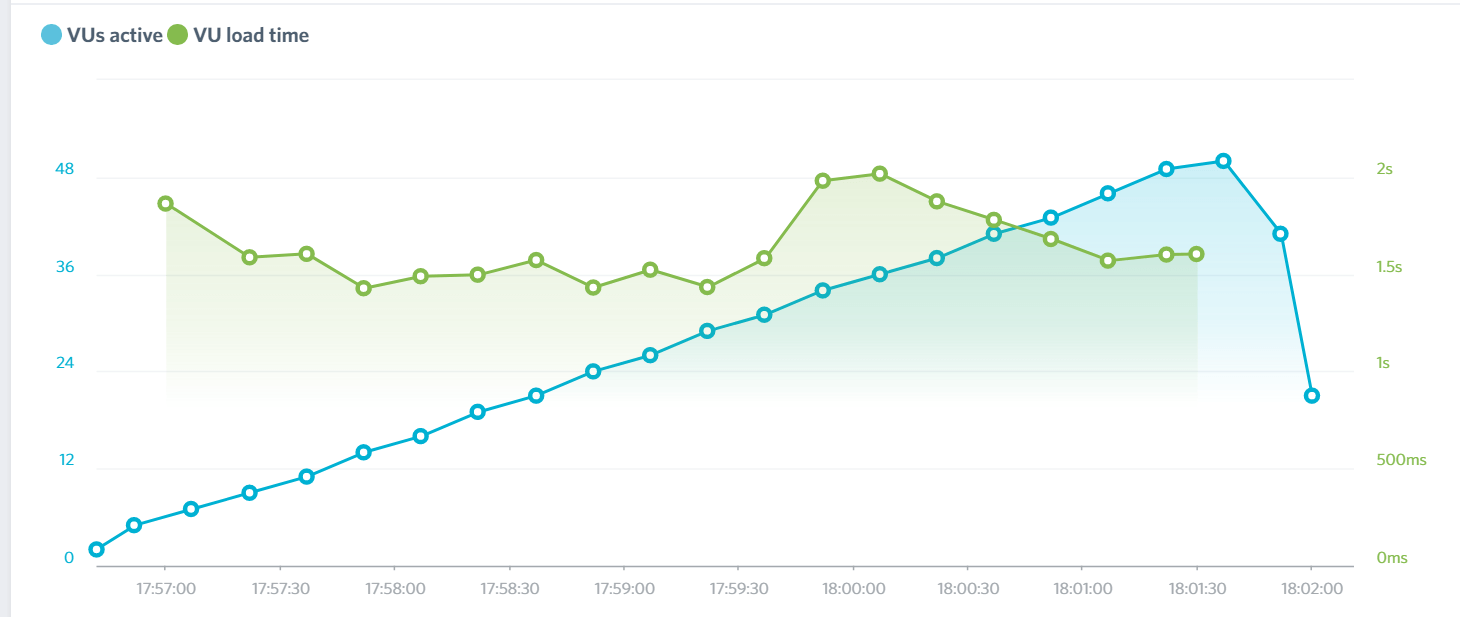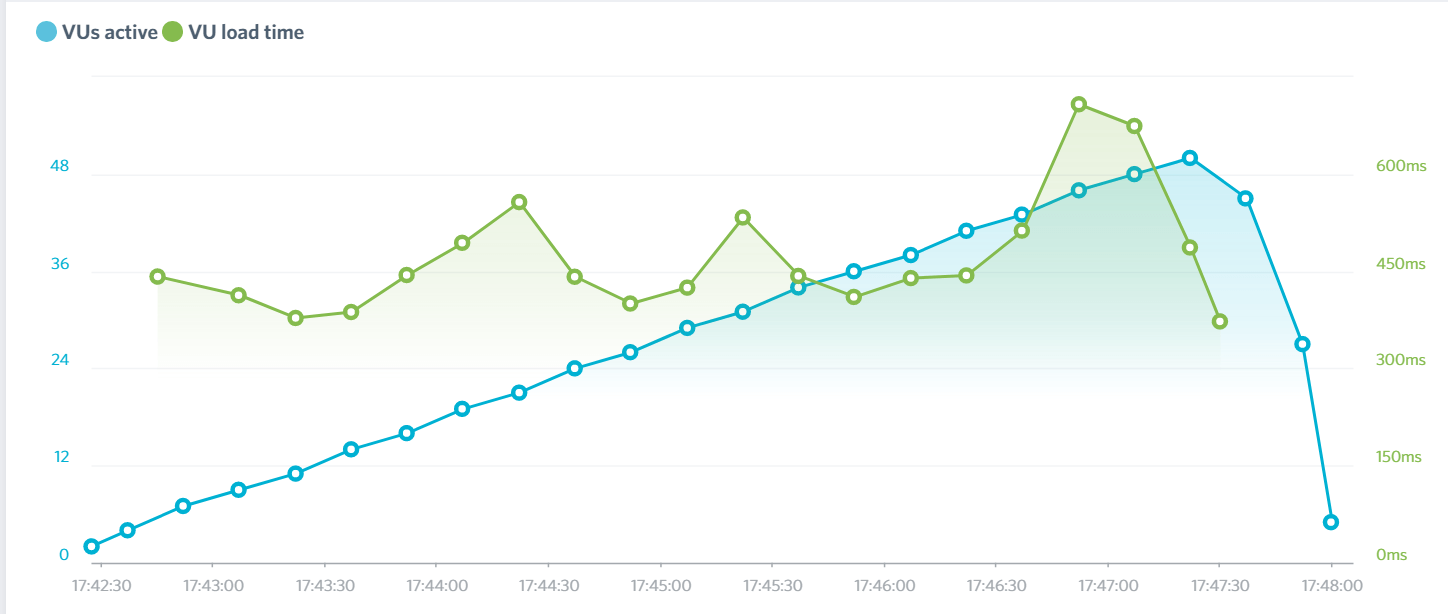Most people will tell you a Virtual Private Server (VPS) is a vastly superior option to shared hosting in almost every case. While this tends to be broadly true, it’s difficult to measure how significant the difference in performance can be. Without that information, you can’t determine if using a VPS is cost-effective.
Fortunately, numbers don’t lie. In this article, we’re going to test one of our favorite providers that offers both shared and VPS hosting. We’ll compare the performance of both types of plans using a thorough set of tests. By the end of the piece, you’ll have a better idea of the difference between shared hosting and a VPS. Let’s put our lab coats on!
A Brief Introduction to Shared Hosting and Virtual Private Servers
Shared hosting offers the most basic of services when it comes to publishing websites. In essence, you share a server with multiple other users, which enables your provider to keep costs down and pass those savings on to you.
These days, you can find plenty of robust shared hosting plans at around or below the $5 per month mark, and from a cost perspective, they’re an excellent option. However, sharing a server limits your website’s performance when traffic levels rise. Later on, we’ll show you a test that illustrates this problem, but for now, let’s move on to VPSs.
Like shared hosting, a VPS also makes you share hardware with other customers. The difference is, each website runs on a virtual computer unique to you, meaning your site gets a dedicated amount of resources. In other words, you get the benefits of a dedicated server while still sharing hardware, which translates to more reasonable costs.
More importantly, a lot of reputable web hosts enable you to scale your VPS as needed. This is a fancy way of saying they can allocate more resources to your computer (at a cost), enabling your website to handle more traffic without having to upgrade to an expensive dedicated server.
On paper, a VPS is the better choice. However, VPS prices vary greatly depending on the resources you choose to allocate to your server. For example, you can easily find a cheap yet robust VPS starting at $5 per month. However, it’s also common to see plans starting at around the $20 per month mark, such as those offered by Bluehost and HostGator. If you’re not sure what your website’s requirements are, you might end up overpaying for a plan with more resources than you need.
How to Measure Performance For a Quality Shared Host and a VPS
There are a lot of factors that go into evaluating a web hosting provider. For example, some services offer better support than others, while another may shine thanks to competitive pricing.
For this article, our primary concern lies with performance. What we’re going to do is evaluate the difference in performance using a single host and test both its shared hosting and VPS plans, using the starter tier for both.
To that end, we’re going to set up a test Divi page on both plans. Then we’ll test how long the page takes to load on average, using servers from different regions through the Pingdom Tools service:
However, loading times alone don’t paint the entire picture when it comes to performance. After all, a well-optimized website might load just as fast from a shared hosting plan as from a VPS. Given this, we’ll also check out how both plans fare under a bit of stress. To do so, we’re going to use the Load Impact service to check out how both websites perform with up to 50 concurrent visitors over a period of five minutes:
This service adds virtual users one at a time until it gets to the cap you set for your test. Then it provides us with loading time information every step of the way, which tells us how our plans fare under duress.
Keep in mind – our tests will be thorough, but we’re only using a single web host and performance may vary with other providers. Given this, we looked around for a web host with a reputation for top-notch performance at accessible costs, instead of using a high-end service. Let’s talk about them before we dive into the test results.
An Introduction to A2 Hosting
A2 Hosting is a provider that’s made a name for itself based on its low prices and above-average performance. In fact, it offers the fastest average loading times among other thirty hosting providers, according to Hosting Facts.
We’re also happy to recommend SiteGround when it comes to affordable WordPress hosting. However, they don’t offer VPS plans, so we’ve opted for A2 Hosting since they have a better variety of tiers, which we needed for our tests.
For the shared hosting portion of our tests, we’ll use A2 Hosting’s Lite plan, which starts at $3.92 per month and supports a single website with unlimited storage and bandwidth. As for our VPS, we’ll go with the basic Power+ tier, which costs $32.99 per month, offers 4 GB of RAM, 75 GB of storage, 2 TBs of bandwidth, and a four-core CPU. That’s a whole lot of firepower, and it’s a managed plan to boot. With managed services, you have to worry about a lot fewer maintenance tasks. However, since we’re talking about a simple one-page test, this won’t affect our test results.
Shared Hosting vs Virtual Private Servers: Our Test Results
To keep things clear, we’re going to break down our results into two sections. In the first one, we’ll deal with our shared hosting plan and the next will cover our VPS results. Then, we’ll talk about what those results mean in practical terms.
Finally, keep in mind we didn’t run any performance optimization procedures on either plan. The loading times you see could be lower if we used image compression, integrated a Content Delivery Network (CDN), and worked on our caching settings. However, that would affect our numbers, so we decided to keep both installations as close to pristine as possible.
1. Shared Hosting
Before we talk numbers, let’s take a look at the page we’re going to use for our tests. Using Divi, we imported one of the theme’s Landing Page layouts and set it up as our home page – here’s the mobile version of that page:
Then, we used Pingdom Tools to measure its loading time from four different locations. For each location, we ran the test three times to get their averages, which are the numbers you see below:
- Melbourne: 3.73 seconds.
- New York: 2.57 seconds.
- San Jose: 1.83 seconds.
- Stockholm: 0.96 seconds.
A2 Hosting’s primary data center is located in the US, and it’s the one we’re using for both plans. As you can see, loading times are way too long for users further away, and relatively low for US-based visitors. The dip in loading times when testing from the Stockholm server is unusual, but still worth bearing in mind. In any case, anything above two seconds is usually too long when it comes to loading times, so you’d need to do some optimization if this were a real website. Surprisingly enough, those loading time averages went down during our Load Impact stress test, which used a server located in Ashburn, US:
The fastest loading time during our test clocked in at a respectable 1.43 seconds and we saw a high of 2.02 seconds when we got close to 50 simultaneous users. These are excellent results for a budget shared hosting plan. With that in mind, let’s find out how A2 Hosting’s VPS stacks up.
2. Virtual Private Servers
Right out of the gate, we expected to see better loading times for our Turbo+ plan, and the results didn’t let us down. If you look next to the numbers, you’ll see the difference in percentage points from our shared hosting results:
- Melbourne: 2.13 (-75.11%)
- New York: 1.41 (-82.26%)
- San Jose: 1.56 (-17.3%)
- Stockholm: 3.35 (+248%)
First off, let’s talk about Melbourne and Stockholm. The variance here is way off the charts since we’re talking about remote servers with variable loading times between tests. In this case, you should pay closer attention to the New York and San Jose results, which shows a definite improvement. Still, there’s a lot of room between 17.3% and 82.26% to give us an accurate idea of the difference between both plans. Let’s see if the Load Impact test can clear things up:
Right off the bat, the difference in the results is staggering. During our tests, we saw a low of 0.37 seconds and loading times didn’t rise past 0.7 seconds even at full load. That’s a decrease of 25.87% and 34.65% respectively. Considering our results, we can say with confidence that upgrading to a VPS won’t only provide you with a performance boost – it’ll also improve your website’s performance when under stress.
Shared Hosting vs Virtual Private Servers: What The Results Tell Us
We walked into this test knowing the balance was going to swing in favor of a VPS because it’s the logical result. After all, the better hardware you have for your server, the greater your website’s performance should be.
With that in mind, the real question here is whether a VPS is a cost-effective option for you. To answer the question, we need to break down VPS plans into two categories, managed and unmanaged:
- Managed VPSs: This type of plan tends to start at around $30 per month.
- Unmanaged VPSs: When it comes to unmanaged plans, you can find options starting at around $5 per month. However, if you want to match the hardware of our managed Turbo+ plan, you should be willing to spend at least $20 per month.
During our previous sections, we got more consistent results from our stress tests, so let’s talk about those numbers. Our VPS stress test tells us we can expect a performance increase of anywhere between 15-35% just from upgrading from shared hosting to a VPS. However, we’re also paying an extra $29.07 for the increase. This means a managed VPS is not cost-effective, except for websites with high amounts of traffic. In those situations, you want to protect yourself from loading time spikes to prevent your bounce rate from rising, so the extra cost is well justified.
Of course, keep in mind you can find unmanaged VPS plans starting at around $5-10 per month. Even at that price point, you still get a hefty performance increase. In those cases, the only reason not to use them over shared hosting is that you won’t have access to control panel software, which can be quite expensive. You can do everything a control panel can through the command line, but it can be a hassle if you’re not already familiar with it.
Conclusion
The short answer is a VPS is indeed better than shared hosting in nearly every case. However, the latter is better for websites that don’t require much firepower. After all, shared hosting tends to be a bit cheaper and costs add up over time.
You can always upgrade to a VPS when you need one, but managed plans often start at around $20 or more, which is a significant increase in costs. Unmanaged plans are a lot cheaper and still provide you with performance benefits, but they require you to be comfortable using the command line.
When do you think is the right time to make the jump from shared hosting to a VPS? Share your experiences with us in the comments section below!
Article thumbnail image by Aukote / shutterstock.com.
Disclosure: This post contains affiliate links that support our team and keep the free blog content flowing. When you purchase something after clicking an affiliate link, we may receive a commission.







